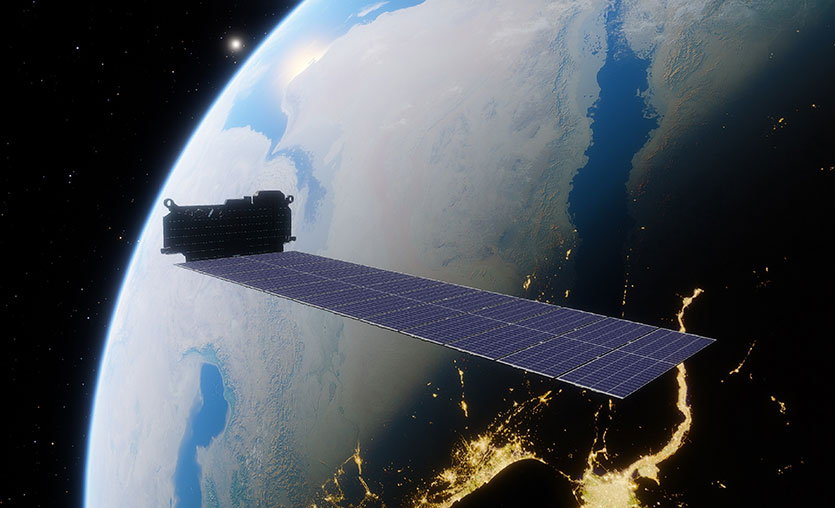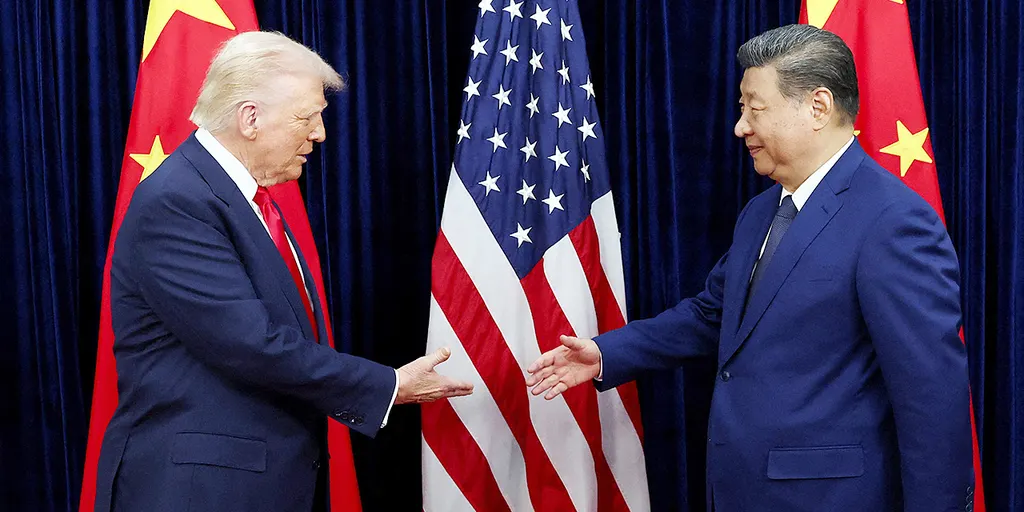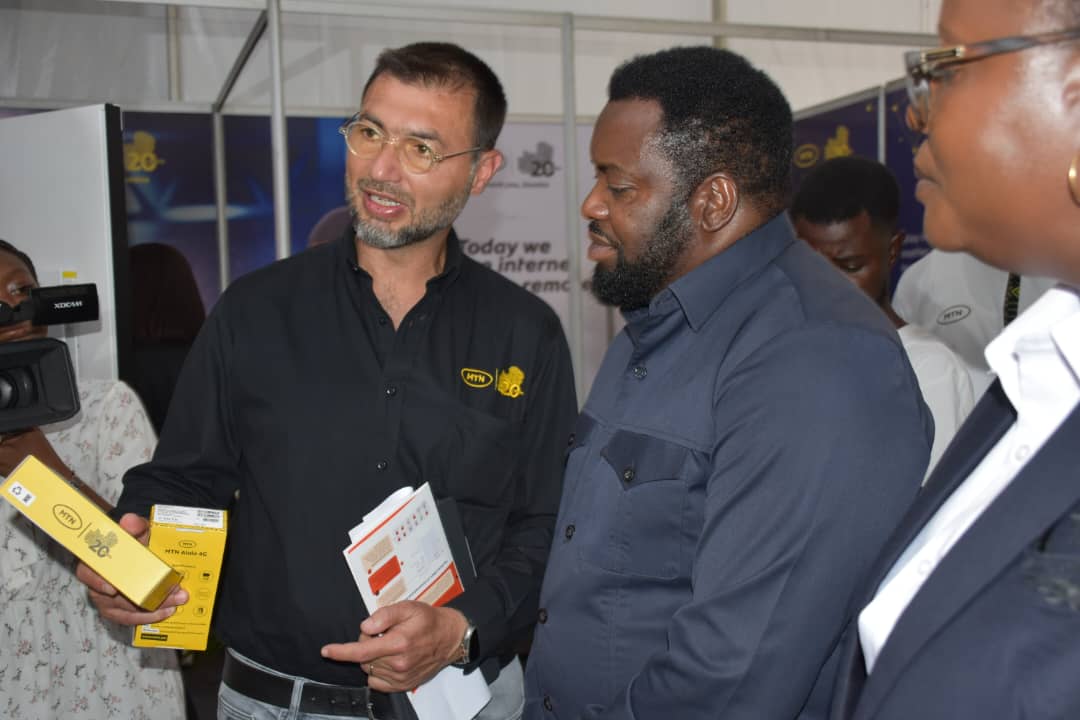Elon Musk’s Starlink will soon become available in Nigeria. Several companies are experimenting with different business models to make satellite internet work for Africa
The eruption of the Hunga Tonga–Hunga Ha’apai volcano on 15 January – the largest the world has seen for more than 30 years – ruptured key sections of an undersea telecommunications cable lying on the floor of the South Pacific.
The island nation of Tonga was cut off from the world as it grappled with a humanitarian crisis. In the almost complete absence of communications, aid agencies struggled to assess the country’s needs. Phone and internet connections were not restored for more than a month.
Weeks after the eruption, an even greater catastrophe – this time manmade – began to unfold on the other side of the world. The Russian forces that poured into Ukraine sought to choke off the ability of Ukrainians to communicate with each other and with their allies overseas.
As they laid waste to many of Ukraine’s largest cities, they made sure that they destroyed mobile phone towers in occupied territory and in areas close to the frontlines.
Elon Musk rides to the rescue
In both Tonga and Ukraine, Elon Musk, the world’s richest man, offered to ride to the rescue. Starlink, a satellite internet constellation operated by Musk’s SpaceX, was given permission to operate in Ukraine immediately after the invasion.
Within weeks, through funding provided by USAID and others, Starlink had delivered 5,000 terminals – which transmit and receive internet signals – to help maintain communications and assist in the war effort. Starlink also sent 50 terminals to Tonga after the eruption, restoring connectivity in some villages on outlying islands.
Africa, of course, is not immune to the acute crises brought about by natural disasters or conflict. But it also suffers from a chronic deficit of telecommunications infrastructure. As of 2020, over 200m people on the continent – about a fifth of the population – were not even covered by a 3G signal.
Investing in fibre-optic cables or mobile phone towers to serve the so-called “last mile” communities in remote areas is often not economically viable. As a result, the UN’s target, unveiled in April, of achieving universal internet access by 2030 will not be met in Africa without drastic action.
Starlink enters Africa
This is where Starlink may come in. The company announced in May that Nigeria and Mozambique had become the first countries in Africa to allow Starlink to operate.
“There is a clear use case for rural areas — the absence of infrastructure,” says Amaka Onyemenam, consultant at advisory firm Africa Practice. In areas where the cost and difficulty of constructing traditional infrastructure is too great, Onyemenam says that “satellite is likely the only viable option”.
Nigerians that purchase a terminal will be able to subscribe to Starlink services from the third quarter of this year; Mozambicans can follow suit shortly afterwards.
Several other companies have also entered the race to provide satellite broadband services in remote areas. Do they hold the key to finally closing the last mile gap and making internet access a reality throughout the African continent?
Cost conundrum
Satellite internet is not, itself, a particularly new technology. What is novel about Starlink and several of its competitors is that they rely on satellites that are in low Earth orbit (LEO).
Being closer to the Earth, LEO satellites are able to receive and transmit information with much lower “latency” than traditional communication satellites, meaning that users will not suffer as much from a “satellite delay”.
Because LEO satellites are closer to the Earth, each satellite can send a signal to a relatively small area. The result is that a very large number of satellites is needed to provide continuous coverage across the globe.
Starlink has already sent around 2,000 satellites into orbit. It aims to have as many as 42,000 satellites to offer strong coverage globally (at present, Starlink’s fastest connections are restricted to certain latitudes).
The LEO satellites deployed by companies like Starlink move across the sky during their orbit (unlike many traditional communication satellites, which orbit at a fixed-point above the Earth). A satellite might cross a sparsely-populated area of Africa, then fly over a higher-income region where more customers are available.
Whereas it is often uneconomical to lay cables or build telecom towers in remote parts of Africa, satellite internet providers are able to cover these areas at no extra cost after serving their main customer base. In fact, companies that build larger constellations will ultimately be able to offer faster connections and incentivise subscribers to sign up.
Still, the obvious drawback of Starlink in Africa is the price for users. Starlink declined to comment for this article; it is unclear whether the company plans to offer a discounted pricing model for consumers in Africa.
At present, residential customers in the US need to pay a one-off fee of $599 to purchase a Starlink terminal, which is then connected to a wifi router, plus a monthly subscription of $110. Similar fees apply in other countries where Starlink is currently available.
Discounts ‘the only way’
Offering a discounted price would be “the only way” Starlink could make inroads in Nigeria, says Eleanor Sarpong, deputy director of the Alliance for Affordable Internet (A4AI). She notes that there are examples of internet service providers subsidising community-owned wifi networks in several African countries, in return for being able to provide adverts to users.
“I’m keen to see what Starlink offers, because if they had a model where they could cross subsidise what users are getting, maybe through some kind of freemium model or from advertising, then that would make sense. As it stands now, the price point makes it very unaffordable.”
Ayobami Omole, SSA telco analyst at consulting firm Tellimer, agrees that Starlink “is unlikely to shift the needle when it comes to broadband penetration and usage in rural areas,” owing to the high costs. She expects high-income households to be the main users in Nigeria, along with large businesses and government agencies.
Starlink does offer an alternative package for businesses, which offers higher internet speeds. But Rose Croshier, policy fellow at the Center for Global Development, suggests that the “the Starlink business model is really designed for the individual – at least that’s how they talk about it.”
OneWeb pursues business-to-business model
This is in contrast to other companies entering the satellite broadband market. OneWeb, one of Starlink’s most prominent competitors, is pursuing a business-to-business model.
A OneWeb spokesperson told African Business that the company is aiming to provide services in Africa from 2023 and will focus on serving government bodies, as well as companies operating in the sectors such as aviation, shipping and mining.
OneWeb is also seeking to work directly with mobile network operators (MNOs) to provide “backhaul” services, where a satellite signal is sent to a receiver, which then connects to a telecom tower. This can be a cheaper alternative to laying a cable to the tower.
“In the remotest parts of Africa, MNOs will be able to access highly resilient, reliable, secure high-speed and low latency connectivity much more cost effectively,” the OneWeb spokesperson said. “This will help connect very remote rural areas and has the potential to transform digital opportunities.”
Bypassing telecoms towers
The backhaul approach still relies on telecoms towers being physically constructed in remote areas. But several companies, such as Lynk Global and AST SpaceMobile, are developing technologies that would transmit a broadband signal directly to a customer’s mobile phone.
Croshier is optimistic that these such technologies could turn out to be a “game changer” for extending access. She notes that satellites would “essentially function like cell phone towers, but in orbit, and you’d be able to use that to talk to an unmodified cell phone”.
Like OneWeb, both Lynk and AST intend to deliver their services through MNOs, rather than offering subscriptions to individuals. AST has “signed agreements or memoranda of understandings with MNOs that serve subscribers across the continent, including Vodafone, MTN, and Orange,” according to Scott Wisniewski, the company’s chief strategy officer.
Wisniewski says commercial services will begin in certain countries by 2024, adding that AST is already “licensed for initial market access in six countries across Africa and Asia, of which Nigeria is the largest in terms of population”.
Lynk, meanwhile, has announced agreements with mobile operators in several countries globally, including the Central African Republic (where the cost of broadband as a percentage of the average income is the highest in the world, according to A4AI data).
Charles Miller, the former NASA adviser who leads the company, says that Lynk is in “advanced negotiations” with several other African MNOs, mostly on contracts based on a revenue sharing model.
“Our deal for many MNOs is we will finance all the capital expense and operational expense of the cell towers in space.” The MNOs, he says, will have “happier subscribers” and additional revenue. “It’s a no-lose deal from the MNOs’ perspective.”
Lynk’s plans to launch later this year, but the service will initially be “periodic and for messaging only,” says Miller. With only six satellites in orbit so far, users might send a text message but have to wait an hour before a satellite passes within range and the message can be delivered. Yet as Miller points out, this somewhat primitive connectivity is still “infinitely better than nothing.”
Lynk aims to have 1,000 satellites in orbit by 2025-26, at which point it will be able to offer a continuous service; eventually, it plans to grow its constellation to at least 5,000 satellites. By this time, Miller insists, users “won’t notice the difference” between a Lynk connection and service from a ground-based tower.
Landscape to grow more competitive
Another hurdle to overcome is regulatory consent. Starlink estimates that service will begin in the rest of Africa (beyond Nigeria and Mozambique) in 2023, but this depends on the company receiving the necessary approvals. Gaining licences will not necessarily be straightforward, given the questionable enthusiasm of some regulator for greater competition in their markets.
South Africa may pose a particular problem for Starlink. It is not clear how the company will be able to comply with regulations that require internet service providers to have 30% black ownership, plus 30% ownership by historically disadvantaged groups.
The OneWeb spokesperson, meanwhile, lamented the “sometimes out-dated regulatory frameworks governing satellite operations” in Africa, noting the “prohibitively high” fees for spectrum licences and customs clearance on terminals.
But Miller offers a different perspective. “The regulators are the least of our worries,” he says, noting that Lynk has received testing licences from 15 countries – “we have more testing licences than we need right now.”
“We found, in talking to the regulators, we solve a huge problem that most of them care deeply about,” says Miller. Regulators have long sought to cajole MNOs into extending coverage into rural areas; MNOs have tended to object on the grounds of cost. “We solve that problem,” Miller claims.
Coming years are crucial
The next several years will be pivotal in the development of the market for satellite internet. It is unclear if the sector can support several large players. OneWeb has already entered into bankruptcy proceedings on one occasion, before being rescued by Indian conglomerate Bharti Global and the UK government in 2020.
“Right now, these big constellations are running on investment money,” says Croshier. “Over the next 10 years, you’re going to see two or three more constellations and then we’ll see which one is going to be able to stick around and build a sustainable business model.”
For now, however, satellite constellations continue to cooperate to some degree. Several of Starlink’s competitors – including both OneWeb and Lynk, among others – have agreed deals with SpaceX, to launch their satellites into orbit. Miller says there is in fact “complete synergy between Lynk and Starlink”.
He argues that Lynk will provide the impetus for millions of people in Africa to purchase a mobile phone for the first time. Businesses will then see the value in a Starlink terminal, offering customers that come to their premises faster internet speeds. Certainly, the economic potential of satellite internet is clear – providing the technology lives up to the hype, and regulatory barriers are overcome.
Miller concludes that satellite internet will be a “total productivity enhancer” for the continent. “It will drive economic growth,” he says, “in particular for people who have real connectivity challenges in rural, remote parts of Africa.”








